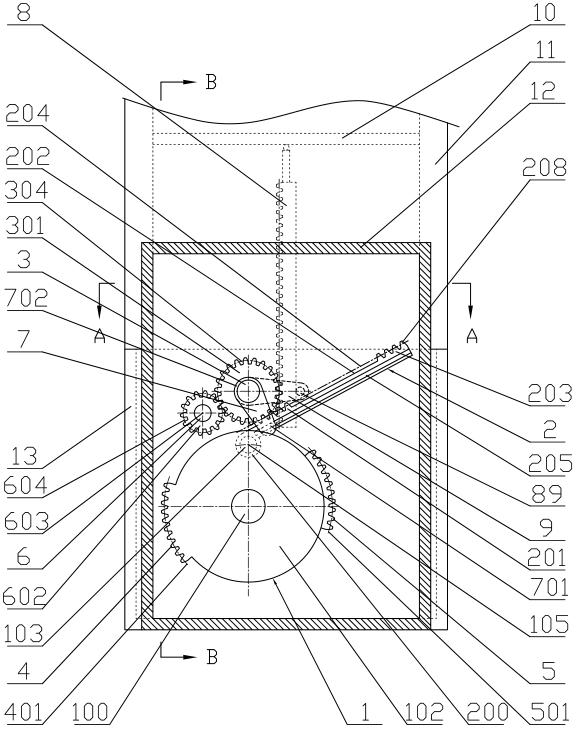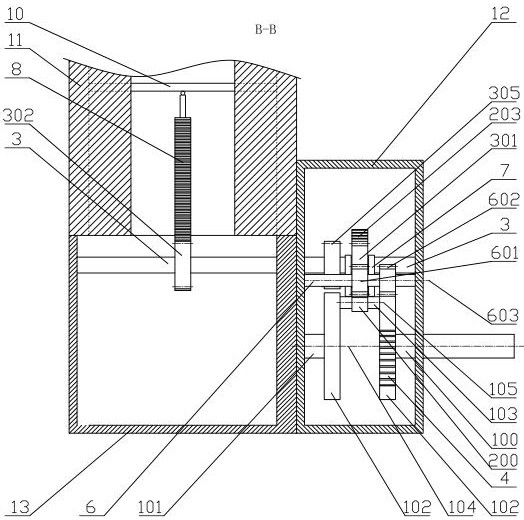Conversion mechanism of combined rack and combined crankshaft
A combined crankshaft and conversion mechanism technology, applied to crankshafts, mechanical equipment, machines/engines, etc., can solve problems such as low efficiency, affecting engine output power, and increasing lateral friction between the piston and cylinder wall
- Summary
- Abstract
- Description
- Claims
- Application Information
AI Technical Summary
Problems solved by technology
Method used
Image
Examples
Embodiment Construction
[0049] The specific implementation of a combined rack-combined crankshaft conversion mechanism provided by the present invention will be described in detail below with reference to the accompanying drawings.
[0050] Such as figure 1 , 2 , 3, the main components of the first embodiment of a combined rack-combined crankshaft conversion mechanism of the present invention include a front main journal 100 and a rear main journal 101, two cranks 102 and its front fan ring 4 and The combined crankshaft 1 composed of the rear fan gear ring 5 and the connecting rod journal 103, the transmission shaft 3 with the main gear 301 and the pinion gear 305, the steering wheel shaft 6 with the steering gear 601 and the auxiliary gear 602, and the toothless middle section The rack 202 and the combined rack 2 formed by the first rack 201 and the last rack 203 at both ends are characterized in that the front main journal 100 and the rear main journal 101 as well as the drive shaft 3 and the stee...
PUM
 Login to View More
Login to View More Abstract
Description
Claims
Application Information
 Login to View More
Login to View More - R&D
- Intellectual Property
- Life Sciences
- Materials
- Tech Scout
- Unparalleled Data Quality
- Higher Quality Content
- 60% Fewer Hallucinations
Browse by: Latest US Patents, China's latest patents, Technical Efficacy Thesaurus, Application Domain, Technology Topic, Popular Technical Reports.
© 2025 PatSnap. All rights reserved.Legal|Privacy policy|Modern Slavery Act Transparency Statement|Sitemap|About US| Contact US: help@patsnap.com



